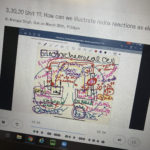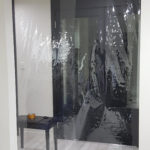By Soyoung Kim
The Coronavirus outbreak has been a huge issue around the world. Nearly 3 million people have been infected by Covid-19, and according to John’s Hopkins data, and more than 200,000 people have lost their lives.
The virus is believed to have started in China to spread throughout Asia, Europe, Africa, and America. The U.S. President Donald Trump declared a national emergency to contain the spread of the virus, and many states issued a stay-at-home order, with all non-essential businesses shuttered.
NYC schools have been closed since March 13th, 2020 as a result. I would like to share my story about how one of the busiest sophomore students in Manhattan Center for Science and Mathematics experienced the unprecedented quarantine over the past two months.
When the coronavirus moved from China to South Korea earlier this year, I was really shocked by the fast spread of the epidemic as the confirmed cases surged day by day. Since my entire family lives in South Korea, I got deeply nervous after hearing that the country reported the largest number of confirmed cases in the world outside of China.
Given the heavy pressure across the borders, I feared it would be just a matter of time for the virus to strike the U.S. When the first confirmed case was announced in New York City, my parents kept me from going to school. My doctor agreed due to my sore throat and thus I stopped going to school. Three days later, the DOE finally declared that the schools would be closed for weeks.
Virtual learning started a week later. I expected some fun, like online games or TV watching, but the remote learning turned out to be much more intense, with a mountain of assignments. I had to submit the google form during my class period, then submit the classwork by 3 p.m. and homework by 12 p.m.
As a result, I had to stick to the computer from early morning till late at night. P.E. even asked us to write a three-page essay every week. After a week, the school concluded that the work was too much, so the non-regents classes reduced the amount of assignments.
The confirmed cases in New York increased so exponentially that my mother feared even going out for grocery shopping. We endured with whatever was left in the food cabinet for as long as 4 weeks. By the end of the second week, we ran out of milk and fresh vegetables so we had to rely on canned or frozen food. We lost our appetites and felt very fatigued.
My mom and I decided to go back to South Korea because it managed to get the virus under better control. Moreover, the virus-related medical services—from testing to treatment—is offered for free in Korea, while it costs $35,000 in the U.S. When I arrived in Seoul, I was directed to go the public health center right away for the test for Covid-19.
It was really painful when they poked deep into my nose and throat. My quarantine life began again for another 2 weeks, this time in Seoul. The officials at the public health center have people closely monitored through location-aware applications to make sure we never leave our house, sometimes randomly visiting our home. We also had to report our condition (fever, cough, sore throat) twice a day, and if I forgot to check in, they gave me a call.
On the last day of the mandatory quarantine, I did the test again and it turned out to be negative, thankfully. I was officially freed from nearly two months of fear and went out for famous barbecue and bubble tea. The DOE hasn’t made a final decision about the school, but I believe the school must remain closed until the cures and vaccines are developed or at least the infection rates stop growing.

